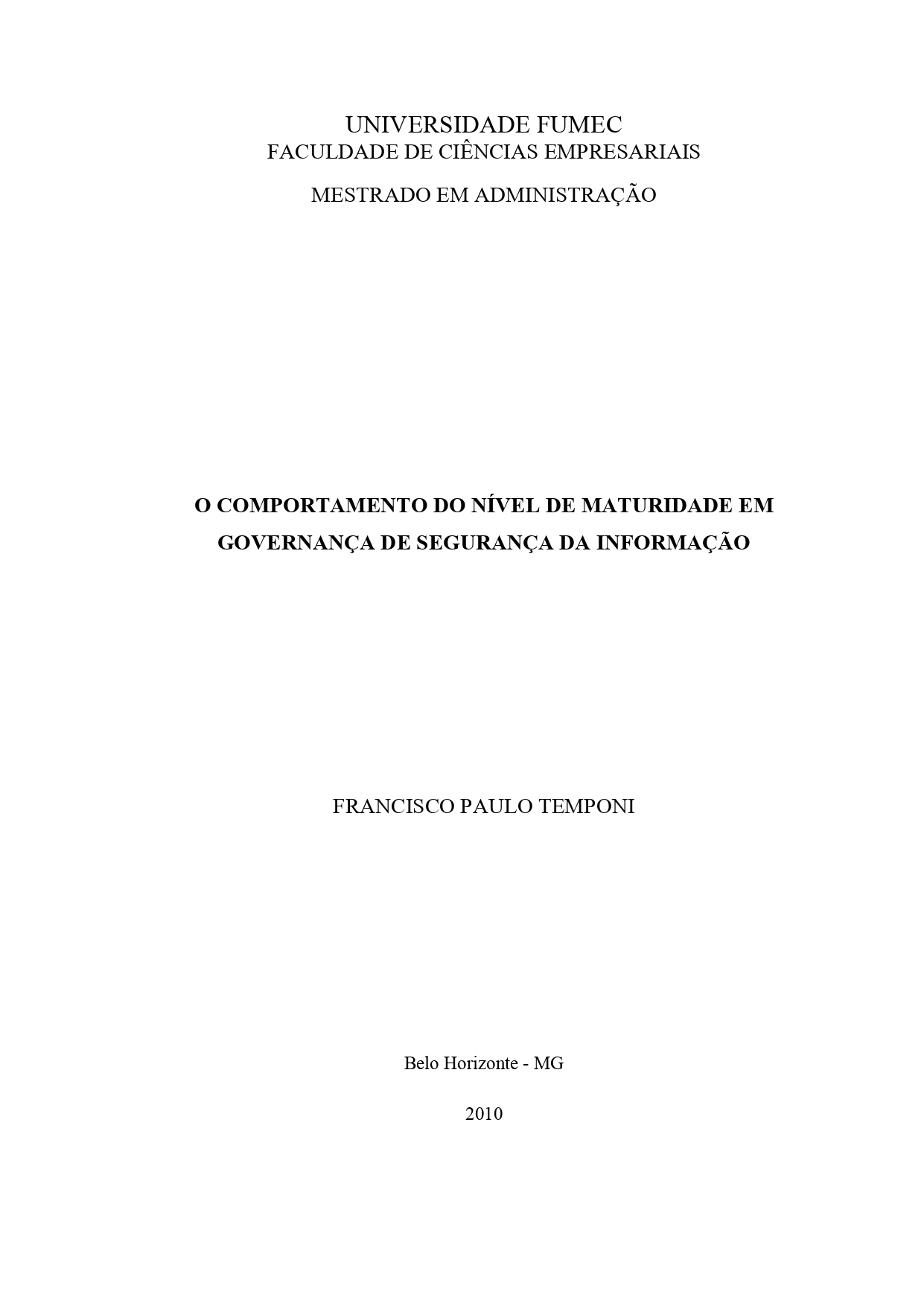O comportamento do nível de maturidade em governança de segurança da informação

Visualizar/
Data
2010Autor
Temponi, Francisco Paulo
xmlui.mirage2.itemSummaryView.MetaData
Mostrar registro completoResumo
O conflito de agência, decorrente da divergência de interesses entre a propriedade e a gestão
empresarial, e os recentes casos de fraudes causaram nas organizações uma maior necessidade
de adesão à Governança de Segurança da Informação (GSI) e seus pilares: a tecnologia da
informação (TI), a segurança da informação e a conformidade com a legislação. Por ser de
responsabilidade e governo dos altos escalões das organizações, a GSI proporciona melhor
gestão dos riscos corporativos como base de sustentação para os valores da Governança
Corporativa (GC), portanto, verifica-se a sua importância para a pesquisa do seu nível de
maturidade. A pesquisa qualitativa, de caráter exploratório, apoiada no referencial teórico e
nos modelos do ITGI, CGTF, COBIT, COSO, BASILÉIA, ISO/IEC 27001, 17799/27002,
27005 e 27014, foi realizada com apoio do estudo de múltiplos casos em organizações
brasileiras sujeitas ou não à regulação. A amostragem contemplou 12 entrevistas semiestruturadas, com gestores de segurança e executivos, em 6 empresas. O nível 2 (repetível) de
maturidade em GSI foi predominante, ressaltando-se que a maioria dos executivos revelou
comportamento de desconhecimento quanto à necessidade e priorização do alinhamento
estratégico de segurança da informação. No geral, há um entendimento emergente sobre a
necessidade de se tratar melhor a gestão dos riscos, entretanto, ainda é reativa e focada em
segurança de TI. A conscientização de segurança nas organizações ainda é fragmentada e
limitada. O posicionamento da área de segurança da informação na estrutura organizacional
ainda é vinculado à área de TI refletindo negativamente nos níveis de maturidade. A adoção
dos modelos que compõem a GSI, em muitos casos, ainda é dispersa e não faz parte de uma
estratégia global. Diante de todo esse cenário, certas organizações que informam optar pelas
práticas da GC estão comprometendo a eficácia no tratamento dos valores dessa na medida
em que não priorizam estrategicamente a adesão à GSI. The agency conflict, due to the divergence of interests between the property and business
management, and recent fraud cases in organizations have caused a greater need for
adherence to the Information Security Governance (ISG) and its pillars: information
technology (IT), information security and compliance with legislation. Because it is the
responsibility of the government and upper echelons of organizations, GSI provides better
management of corporate risks as a basis for support for the values of Corporate Governance
(CG), so there is its importance for research on their level of maturity. A qualitative research,
exploratory, based on theoretical models as ITGI, CGTF, COBIT, COSO, BASEL, ISO / IEC
27001, 17799/27002, 27005 and 27014, was accomplished with support of multiple cases
studies in Brazilian organizations subject to regulation or not. The sample included 12 semistructured interviews with security managers and executives in 6 companies. The level 2
(repeatable) prevailed in ISG maturity, emphasizing that most executives revealed behavior of
ignorance about the need and prioritization of the strategic alignment of information
security. Overall, there is an emerging understanding about the need to better address risk
management, however, is still reactive and focused on IT security. The security awareness in
organizations is still limited and fragmentary. The positioning of the area of information
security in the organizational structure is still tied to the IT field reflecting negatively on
levels of maturity. The adoption of models that comprise the ISG, in many cases, is still
scattered and not is part of an overall strategy. Faced with this whole scenario, certain
organizations that inform the choice of CG practices are compromising the effectiveness of
the treatment of values as it does not prioritize strategically to join the ISG.
